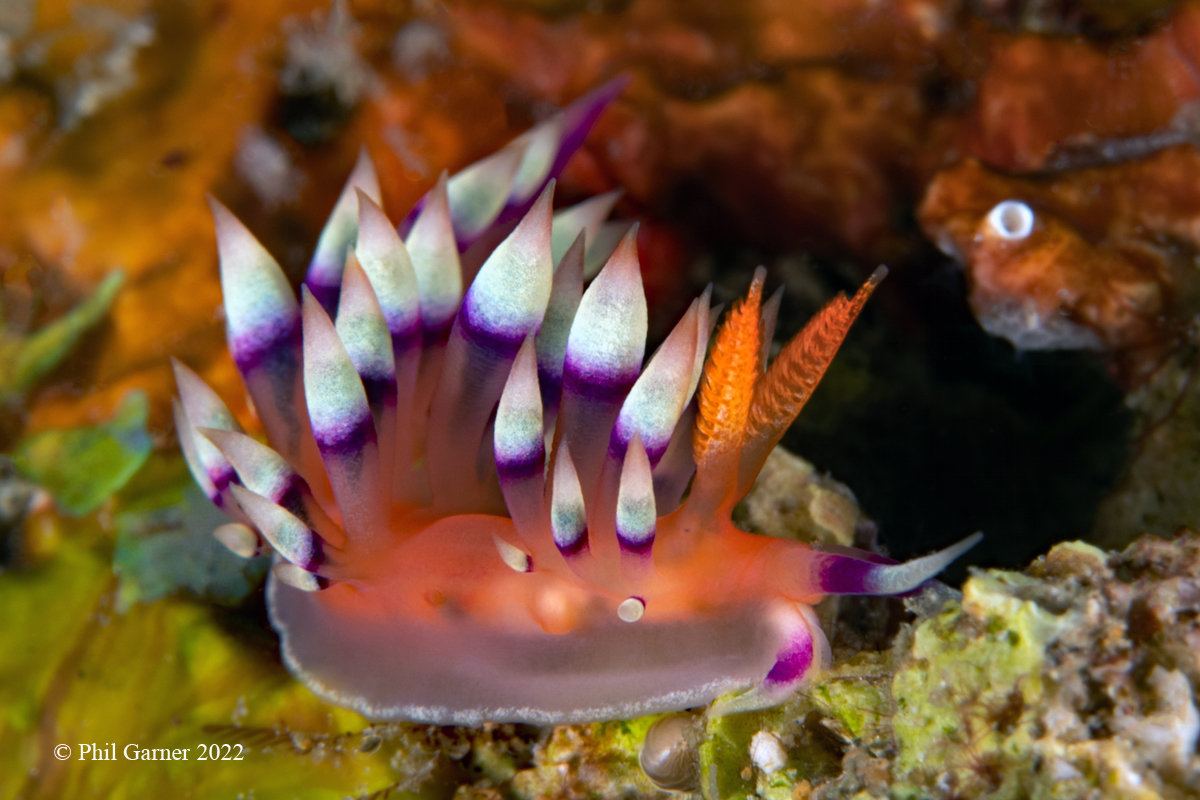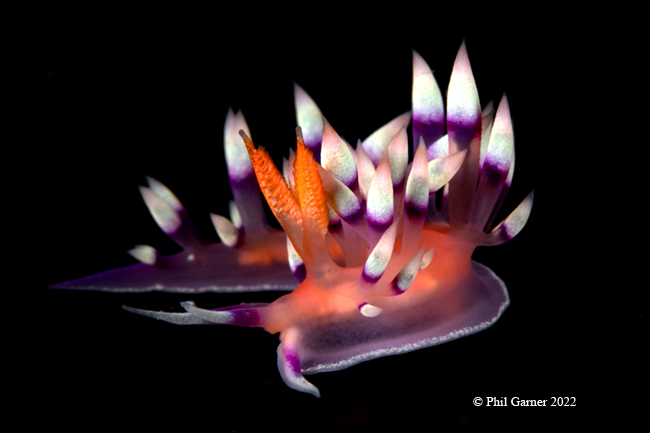 |
Flabellina exoptata
Image courtesy of Phil GarnerMainit Dive Site, Anilao, Philippines
Mainit Dive Site, Anilao, Philippines
 | Flabellina exoptata Gosliner & Willan, 1991 In NSSI 2nd edition we categorize the Flabelllinids by the morphology of their rhinophores. F. exoptata falls into the group with papillate rhinophores, the papillae being concentrated on the posterior side of thee rhinophore. The body is purple-red. The cerata are thick and each one has purple subapical ring and a white or cream apex. The rhinophores are orange with yellow spots. This aeolid feeds on hydroids of the genus Eudendrium. It is known from throughout the Indo-Pacific where it reaches 20 mm in length. Great photo Phil. |
Sammamish, WA 98074
June., 2022
Send Dave email at davidwbehrens@gmail.com

Phil Garner has been scuba diving since 1989. Before that, he enjoyed free diving the many reefs around Palos Verdes. He met Merry Passage during a beach dive at Marineland in 2006 and they have been a team ever since. Phil is the author of Diving The Palos Verdes Peninsula . He and Merry can be found branching as often as possible.
Send Merry email at mbpassage@yahoo.com
|

|

|
